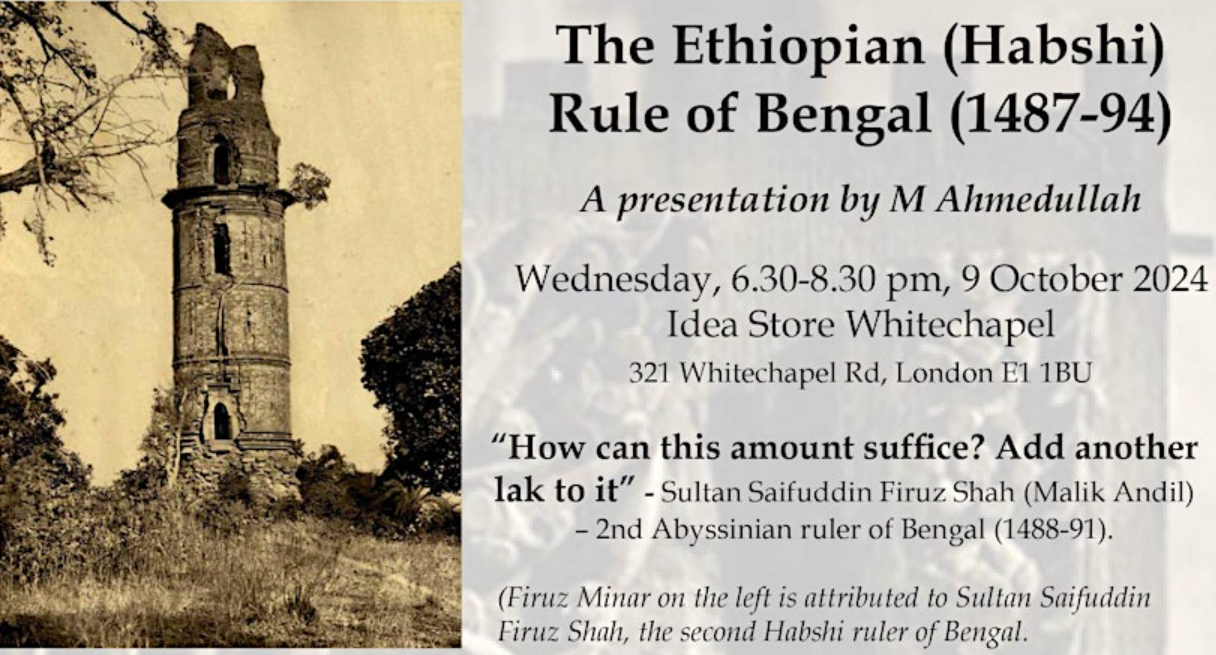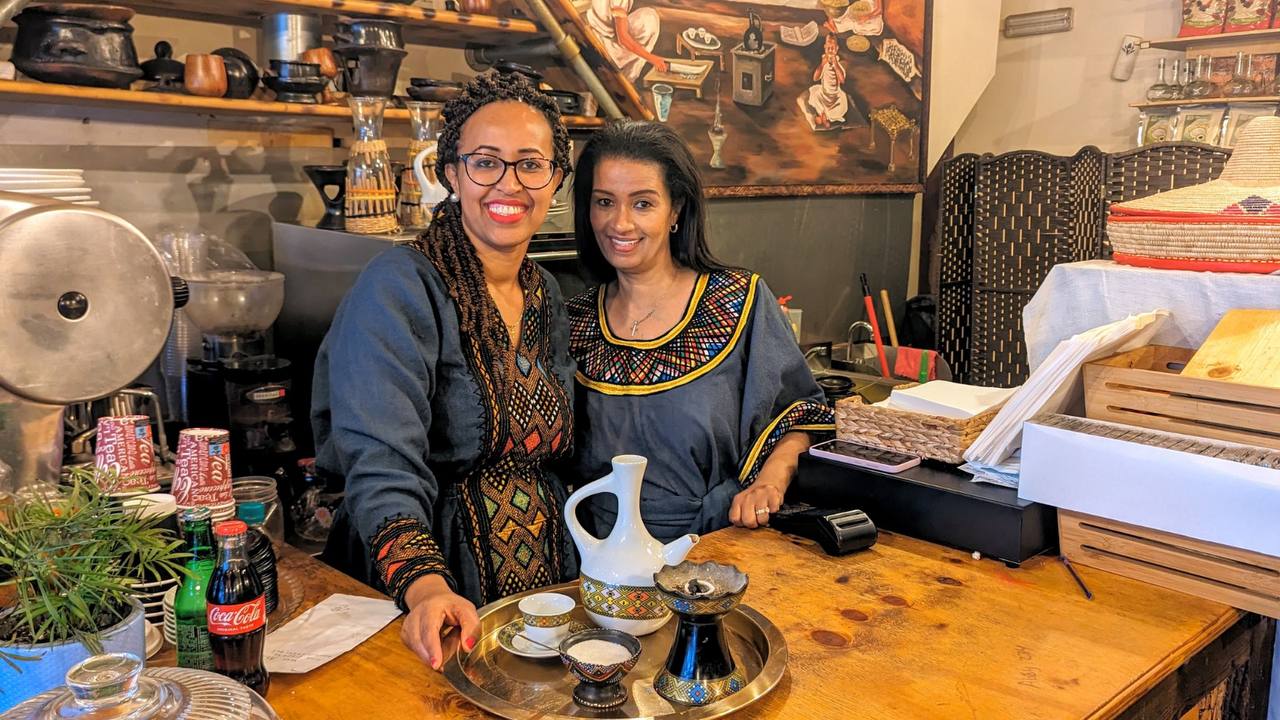he Ethiopian (Habshi)
Rule of Bengal (1487-94)
A presentation by M Ahmedullah
Wednesday, 6.30-8.30 pm, 9 October 2024
Lab 1A, Idea Store Whitechapel
321 Whitechapel Rd, London E1 1BU
“How can this amount suffice? Add another lak to it” – Sultan Saifuddin Firuz Shah (Malik Andil) – 2nd Abyssinian ruler of Bengal (1488-91).
During 1487-94, a series of kings of African origin ruled the Bengal Sultanate. From the beginning of ‘Muslim rule’ in northern India, in addition to Turkish slaves, Ethiopian men were imported to serve nobles, military commanders and sultans, primarily as slave soldiers. Some rose through the ranks and achieved high positions by becoming military commanders, senior officials, nobles, governors and even rulers.
In the case of the Bengal Sultanate, several individuals of African origin became rulers, but this was only for a very brief period. It is not likely that all enslaved Africans brought to India were from Ethiopia. They were most probably of complex African origins and mixes with a majority from Ethiopia. They were collectively called Habshis by the Muslims or Abyssinians by Europeans.
M Ahmedullah is currently working on fictionalising the Habshi rule of Bengal, based on historical sources, to tell the story of how in 1487 the Habshi rule of Bengal began and what happened during the short-lived turbulent years that caused its end in 1494. The story will contextualise the period and include how and when the Ethiopians came to Bengal, their roles, and how some of them rose to power to become sultans of the powerful, large and economically rich territory of the Bengal Sultanate.
In total, there were four sultans from an Ethiopian background who ruled the Bengal Sultanate for nearly seven years. Unless there is a strong thread between them, fictionalising this period with several rulers is very challenging. As such, he is exploring how to tell the story through the eyes of the dowager queen, the wife of the last Ilyas Shahi ruler, Sultan Jalaluddin Fateh Shah, who played a vital role in installing in 1488 the second Ethiopian ruler of Bengal, Sultan Saifuddin Firuz Shah and must have witnessed with intense interest and agony how things unfolded before the period ended in 1494.
Had it not been for her insistence on who should be the next ruler, the Ethiopian rule of Bengal would most probably have ended with its first ruler, Sultan Shahzada Barbak Shah, who took power after killing Sultan Jalaluddin Fateh Shah in 1487. The short period of Ethiopian or Habshi rule of Bengal (1587-1494) was also very significant, at least in one major way. It ended the previous Ilyas Shahis, who ruled Bengal for about 150 years with a short break and was the longest dynastic rule of the Bengal Sultanate.
A study circle on the Bengal Sultanate, faciliated by M Ahmedullah, will be formed after the event in October 2024. If you would like to join the group for shared, mutual learning of this important historical period, please email bricklanecircle@yahoo.co.uk.






